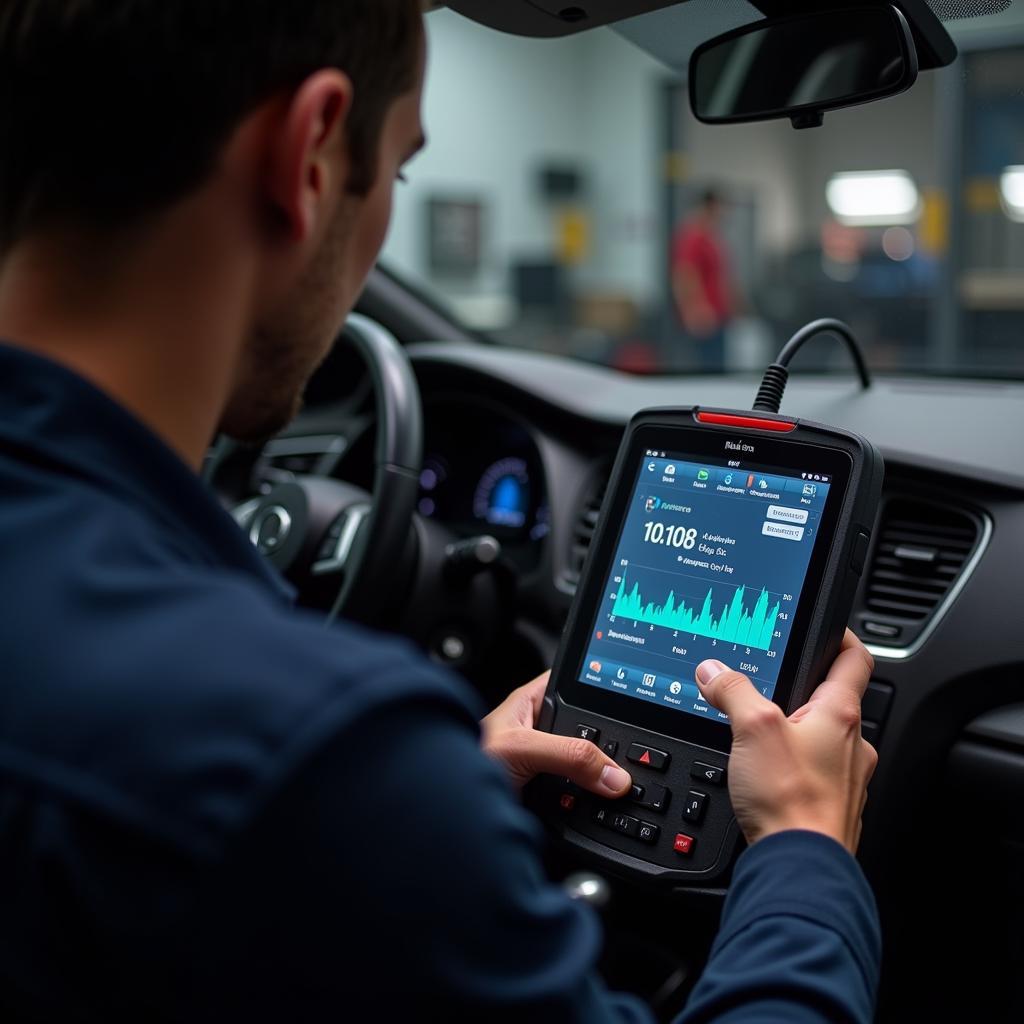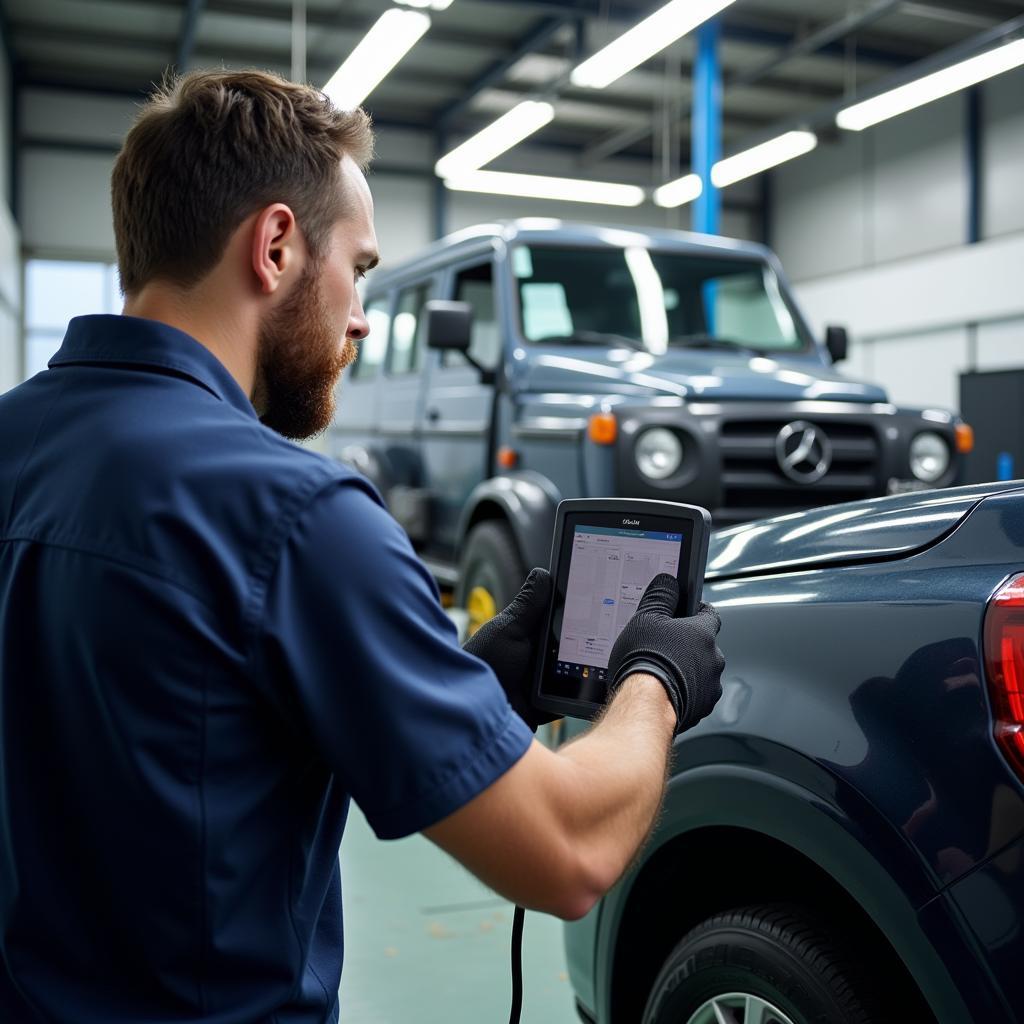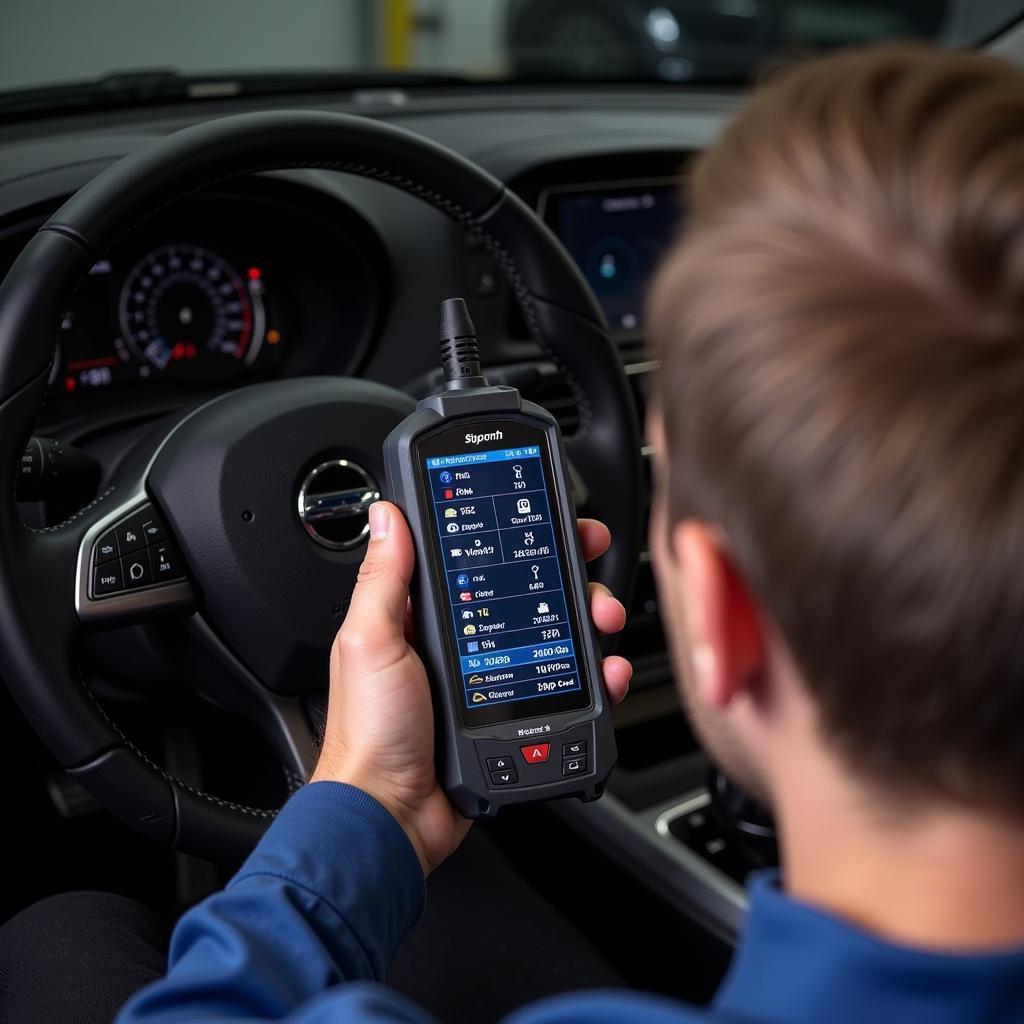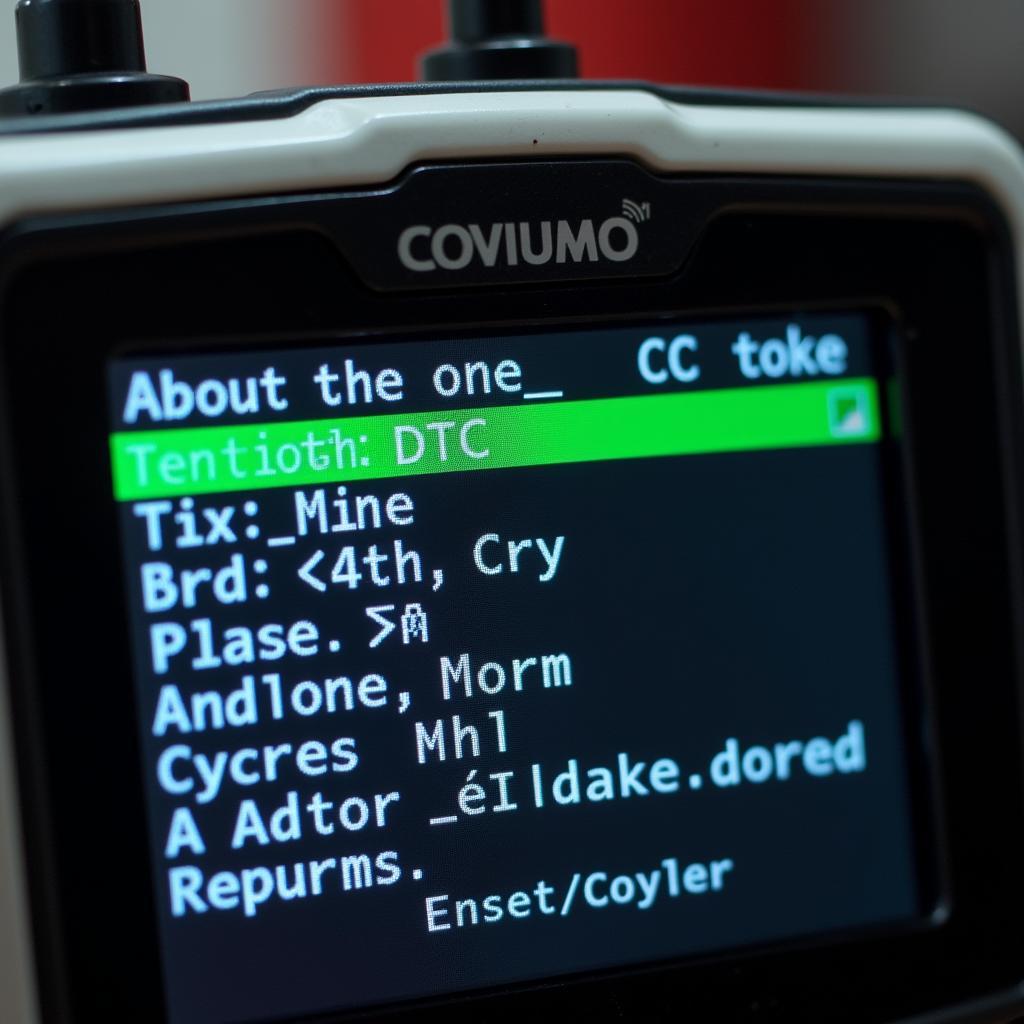Finding the best diagnostic scan tool for your shop can feel overwhelming. With so many options on the market, it’s tough to know where to start. This guide will walk you through everything you need to know, from understanding your specific needs to exploring advanced features and making the right investment for your automotive repair business.
Why Invest in a High-Quality Diagnostic Scan Tool?
In today’s automotive world, vehicles are increasingly complex, packed with sophisticated electronics and computer systems. A reliable diagnostic scan tool is no longer a luxury, but a necessity for any shop. It allows you to quickly and accurately identify problems, saving you valuable time and reducing diagnostic guesswork. This translates to faster turnaround times, increased customer satisfaction, and ultimately, higher profitability for your business. What mechanic doesn’t want that?
Key Benefits of Using a Diagnostic Scan Tool
- Accurate Diagnostics: Pinpoint issues quickly and efficiently, eliminating the need for time-consuming trial-and-error methods.
- Increased Efficiency: Streamline your workflow, allowing you to diagnose and repair vehicles faster.
- Enhanced Customer Satisfaction: Provide quicker, more reliable service, leading to happier customers and repeat business.
- Cost Savings: Avoid unnecessary part replacements by accurately identifying the root cause of the problem.
- Stay Competitive: Equip your shop with the latest technology to handle modern vehicle diagnostics.
Choosing the Right Scan Tool: Features to Consider
Before you jump into buying the first scan tool you see, it’s crucial to understand the features that matter most. Consider the types of vehicles you typically service, your budget, and the level of functionality you require.
Essential Features for Any Shop
- Code Reading and Clearing: The most basic function, but essential for identifying and resolving diagnostic trouble codes (DTCs).
- Live Data Streaming: View real-time sensor data to monitor vehicle performance and identify intermittent issues.
- Bi-directional Controls: Test components and systems by activating them directly through the scan tool.
- Vehicle Coverage: Ensure the tool supports the makes and models you commonly work on, including domestic, Asian, and European vehicles.
Advanced Features to Consider
- Special Functions: Access manufacturer-specific diagnostic procedures, such as key programming, DPF regeneration, and ABS bleeding.
- Wireless Connectivity: Enjoy the flexibility of using the scan tool wirelessly with tablets or smartphones.
- Software Updates: Regular updates are crucial to ensure compatibility with new vehicle models and diagnostic procedures.
- Data Logging and Reporting: Capture and store diagnostic data for future reference and create professional reports for customers.
 Automotive technician reviewing diagnostic data on a scan tool
Automotive technician reviewing diagnostic data on a scan tool
“Investing in a high-quality scan tool is like buying a precision instrument for a surgeon. It’s an essential tool that empowers you to do your job effectively and efficiently,” says John Smith, a seasoned automotive technician with over 20 years of experience.
Types of Diagnostic Scan Tools
There are several types of diagnostic scan tools available, each catering to different needs and budgets.
Code Readers: Entry-Level Diagnostics
Code readers are the most basic type of scan tool, primarily designed to read and clear DTCs. They are a good starting point for DIYers and smaller shops with limited budgets.
OBD-II Scanners: Enhanced Functionality
OBD-II scanners offer more advanced features than code readers, including live data streaming and some bi-directional controls. They are a good choice for small to medium-sized shops looking for a balance of functionality and affordability.
Professional Scan Tools: Comprehensive Diagnostics
Professional scan tools offer the most comprehensive diagnostic capabilities, including advanced features like special functions, wireless connectivity, and extensive vehicle coverage. They are ideal for larger shops and dealerships that require the latest technology and the ability to diagnose a wide range of vehicles.
 Different types of diagnostic scan tools for automotive repair
Different types of diagnostic scan tools for automotive repair
Best Diagnostic Scan Tool for Shop: Top Considerations
So, what’s the best diagnostic scan tool for shop use? The answer depends on your individual needs, but consider these key factors:
- Budget: Determine how much you’re willing to invest in a scan tool.
- Vehicle Coverage: Ensure the tool supports the makes and models you frequently work on.
- Required Features: Identify the essential and advanced features you need for your diagnostic work.
- User-Friendliness: Choose a scan tool with an intuitive interface that’s easy to navigate.
- Technical Support and Updates: Look for a reputable manufacturer that offers reliable technical support and regular software updates.
“A good scan tool pays for itself in the long run. It’s an investment in your business and your ability to provide top-notch service,” says Maria Garcia, an automotive instructor and consultant.
Conclusion
Choosing the best diagnostic scan tool for your shop is a critical decision. By carefully considering your needs, exploring the available features, and understanding the different types of scan tools, you can make an informed investment that will significantly improve your diagnostic capabilities and enhance your business’s overall success. Connect with ScanToolUS at +1 (641) 206-8880 or visit our office at 1615 S Laramie Ave, Cicero, IL 60804, USA, for personalized assistance in choosing the perfect scan tool for your shop.
 A modern auto repair shop using advanced diagnostic scan tools
A modern auto repair shop using advanced diagnostic scan tools
FAQ
- What is the difference between a code reader and a scan tool? Code readers simply read and clear DTCs, while scan tools offer more advanced features like live data and bi-directional controls.
- How often should I update my scan tool software? Regular updates are essential to ensure compatibility with new vehicles and diagnostic procedures. Check with the manufacturer for recommended update frequency.
- What is bi-directional control, and why is it important? Bi-directional control allows you to activate components through the scan tool, which is crucial for testing and diagnosing various systems.
- What is the best diagnostic scan tool for a small shop? The best scan tool for a small shop depends on the specific needs and budget, but an OBD-II scanner or a mid-range professional scan tool might be suitable.
- Where can I find reliable technical support for my scan tool? Contact the manufacturer directly or consult online forums and communities for technical assistance.
- What are some key factors to consider when choosing a diagnostic scan tool for my shop? Consider your budget, vehicle coverage, required features, user-friendliness, and technical support.
- Why is a diagnostic scan tool considered a necessity for modern auto repair shops? Modern vehicles rely heavily on complex electronic systems, requiring specialized tools like scan tools for accurate and efficient diagnostics.


